On Gold Mountain Read online
Page 37
What could they do? They went to Chinatown and opened Soochow right next door to Fong See’s store. In 1933, Soochow was only the seventh restaurant in Chinatown to serve family-style dinners. Fifty cents a person bought chow mein, snow peas and char siu, egg foo yung, fried shrimp, and rice. No Chinese person would ever order this tourist meal! But Caucasians seemed to like it, and Soochow prospered, even during Prohibition. She would never allow her husband to serve liquor, ever, period. If white customers wanted that, they could go to Toey Far Low. That was a tough place! Let them go there! Finally they had earned enough money to send Gilbert back to school, and now even Margie had graduated from USC with a degree in social work. Mrs. Leong liked to tell people, “My son is an architect. He’s working for Harold Harris, the architect. That Mr. Harris, he’s a great admirer of Frank Lloyd Wright and designs avant-garde houses. You know what my Gilbert says? He says, ‘That’s not the usual run of the traffic.’ And my Margie? Oh, she’s a social worker.” Her friends knew enough not to ask about Ed or Elmer.
All these things Gilbert did not understand, just as he did not understand her dedication to the mission. As a girl in China, she had been a “rice Christian”—sent to a Baptist mission school outside Canton to learn the ways of the Lord in exchange for a meal. Over time she forgot about her stomach to excel in her studies—both academic and religious. At seventeen, a go-between arranged for her to be betrothed, and she was married sight unseen to Leong Jeung, a vegetable peddler in the Gold Mountain, who came over for the ceremony. He was much older than she was, but he was a good man, and by the time he went back to America, she had converted him. In 1910, when Ed was less than a year old, she boarded a ship for San Francisco. Aiya! Angel Island—so many months she spent there. All of them she still wanted to forget.
When she finally met her husband again in Los Angeles, she discovered he had become a Methodist. She was a Baptist, but she was Chinese first. Out of respect for Leong Jeung, she became a Methodist. She began to learn everything she could about the Methodists in Los Angeles. She learned how, along with the Presbyterians, Congregationalists, and Baptists, the Methodists set up missions after the riot and massacre of 1871; how a mission’s success depended on the clergy speaking at least a smattering of Chinese; and how the missions offered spiritual comfort, lessons in acculturation, and language classes for young and old.
To honor her husband, she concentrated her efforts on the Methodist Mission, but she was hardly the first Chinese to do so. In 1889 several Chinese accepted baptism in the Methodist Mission and were listed in the parish’s register. Among these were Chan Kiu Sing, a merchant on Spring Street, and his wife. He became the first Chinese in the United States to receive a license for preaching from the Methodists. From 1900 until his death in 1923, he was the pastor of the Los Angeles Chinese United Methodist Church.
Even today, Mrs. Leong couldn’t think of his death without sadness. Reverend Chan had done so much for the community. When he hadn’t been serving the church, he’d been working as the city’s first Chinese court interpreter. He’d acted as social worker, minister, elder of the church, and governmental go-between. Many wives in Chinatown relied on Reverend Chan to accompany them to the Sam Sing Butcher Shop to select a piece of roast pork. Often he could be seen walking up Marchessault Street with paper cones filled with the fragrant meat to be personally delivered to the chosen few. (Naturally, Mrs. Leong was among them.)
In her early days on the Gold Mountain, Mrs. Leong had also learned about Caucasian women who left their families as often as three times a week to spend their evening hours teaching English to single men. She heard about and met Mrs. Emma Findlay, a Congregationalist, who never outwardly tried to convert, preferring to make herself indispensable to the women of Chinatown and their friends and relatives in the area around the City Market. Mrs. Findlay taught Chinese women English, bought them embroidery supplies, and took them to American stores to shop for western-style shoes, hats with ostrich feathers, and shirtwaist dresses with lace collars. She taught them how to put up their hair in the pompadour style. She introduced them to the German midwife, supplied baby clothes, and, when the children were old enough, arranged for them to go to American school.
All this Mrs. Leong observed. All this she learned. And one thing she knew for certain. She could do better than any American woman! In time, Mrs. Leong traveled north to San Francisco to take an examination, pledge her allegiance to the United States, and become the first Chinese-language teacher certified by the State of California. She found no “rice Christians” here in America. Most people, even if they were very poor, had enough to eat, not like China. She’d had to figure out another way to save the souls of the children. She could have called them “tongue Christians,” for all parents in Chinatown wanted their children to know the language of their homeland.
Her work did not end with the children. A few years ago, Mrs. Leong and Mrs. Chan, the Reverend’s widow, started the Win One Circle—the first Chinese women’s religious organization in Los Angeles. They quarreled a long time over that name—Win One. They decided it meant to win somebody over or bring somebody in and then teach them about the Bible. Many of the members were Buddhists and knew nothing about Jesus, but they learned quickly enough. Those women were so lonely. After years of separation, some had finally come to America alone, with small children, staying on Angel Island sometimes for months—as she had done—unable to fathom their interrogators’ questions. Others had come as mail-order brides, meeting their husbands for the first time when they left Angel Island. Some had even been sent here as contraband, crossing the Pacific in sealed wooden crates down in the holds of big ships, living quietly so as not to attract attention, rationing their food, surviving their own horrible human smells. Any way they came, the women arrived in Chinatown knowing no English, having no faith.
The Win One Circle evolved into a personal triumph. Mrs. Leong went herself to meet many of the wives and get permission from their husbands for them to come to her house once a week. In the beginning she had perhaps twelve ladies, but after a few years the group grew to twenty. After a lunch of noodles and tea, they did a Bible reading followed by songs, then lessons on American customs, everyday English sentences, and what to do if you came in contact with an American. During holiday time—and as the women converted, more and more of them celebrated Christmas—Mrs. Leong instructed them on where to find Christmas ornaments, how to select stockings for their children, what a candy cane was, and how to make gingerbread.
She told them which stores were good, always recommending the National Dollar Store on Broadway—“owned by Joe Shoong, who came to San Francisco at age twenty-three and now owns forty department stores.” She told the ladies on which floor to find certain gifts. Men’s socks and ties on the mezzanine, reindeer sweaters on the second floor. They should stop on the ground floor to see the Santa Claus, who would give their children rock candy and a little Christmas book. She taught them how to say “Can you help me, please?” “How much is this?” “I want one [or two, three, or four],” and “Thank you very much.” She told them what to expect. “Look for a woman behind a counter to help you. Keep your money in a purse and count it out carefully. Take your time. The American may get angry, but it is your money.”
Besides the Win One Circle, Mrs. Leong held a monthly tea meeting at the church by the Plaza for the mothers of her Chinese language students. The tea was “attendance required” if the women wanted their children to continue with their lessons, just as it was “attendance required” at Sunday school and church service on Sundays for all the students. The women came—even if they worshiped Kuan Yin or followed the teachings of Confucius—because they wanted their children to learn.
Like so many baby birds, the women begged nonstop: “I want my children to know about the culture and civilization of their homeland,” they chirped. “I’d like my son to study Chinese so that he can read letters from his grandparents,” they peeped. “I will give my chil
d anything as long as he asks me in Chinese.” Mrs. Leong did her best to feed their dreams.
She knew the children often complained to their parents that they had no free time. She held class every weekday from 3:30 to 5:00 P.M. and on Saturdays from 10:00 A.M. to 12:30 P.M. On Sundays, the service went from eight in the morning to eleven, Sunday school from eleven to three. No time was left to play, the children griped. They went to American school, then Chinese school, then to work in laundries, restaurants, or curio shops, and they still had their homework and home chores. She never listened to this nonsense—her Gilbert had to live this way, and had done well—but Reverend Chan did. He changed the whole Sunday schedule to give families free time. “This way,” the Reverend had said, “people can spend the afternoon at the park or the beach.” She hadn’t understood his thinking, or that of Reverend Wong, who had taken over the ministry, but she had to live with it.
Mrs. Leong always found something more to do. Once a month the Congregationalists, Presbyterians, and Methodists got together for a Union meeting. Each group met at its own church for an early-morning service, then they all spent the afternoon together at a picnic—usually at Lincoln or Brookside Park. On the Fourth of July, children of all denominations piled into the back of the Methodist Mission’s stake-body truck and bumped across town to the ocean, throwing firecrackers at pedestrians and cars along the way. They flew the American flag on one side of the truck and the Chinese flag on the other. Her memories of those noisy days were always of warm potato salad and sandwiches and fried chicken gritty with beach sand.
When she got tired, her husband often grumbled, “You are too tied down to the school. You should give it up. Why are you wasting your time? It’s too much on you.” There was no money in this work, she knew. Twenty-five dollars a month stipend for twenty years, paid by the Methodist Home Office in San Francisco. She was not teaching because she needed the money, she always reminded Leong Jeung. She was doing God’s work. Wasn’t it true that during the years she’d been teaching, the membership at the Methodist Church had grown to three hundred, surpassing the Congregationalists and the Presbyterians? “Oh, yes, then, that’s all right,” her husband always said, then dropped the subject.
So now this wedding. For eight years she’d told Gilbert no. She saw nothing wrong in this. “I am giving it to you straight,” she had told him. “All Chinese parents—no, not just Chinese parents, but parents of any nationality—Japanese or Italian, I don’t care—they want their children to marry someone of their own race. Florence See is half Chinese, yes. Of course she is Chinese. But she has too much fan yin—too much Caucasian thinking in her.”
In these past years, she and her son had many arguments. He would say, “You only know the old school. You always say you have to be one hundred percent Chinese and know everything Chinese—customs, thinking, everything.”
And she had always answered, “Even if you have only a little bit of a foreign element in you, you are going to sway over to that side. This Florence See—too much fan yin, I tell you.” But in the end, Gilbert did not listen to her. It was because of the war, he said. If he was going to be a soldier, he was going to live his own life.
“Mom,” Gilbert said, “I have to take the bull by the horns.”
And he did! Just like that! So then he went to Fong See. What did she expect, that the old man would say no? Fong See said, “I am not unaware of gossip on the block. You and my daughter have been going together a long time. I have known your family a long time. Send your mother and I will speak to her.” That visit—between Mrs. Leong and old See-bok—had set in motion the formal engagement and the protracted negotiation for the bride-price.
She let her eyes run down the list of characters she had written. If there was to be a wedding, all traditions would be properly carried out. Eastern Bakery, on Grant Street up in San Francisco, made the best bride cakes in this country, some filled with meat, some with lotus seeds or black bean paste. She ordered an extra two dozen of the lotus-seed dessert, since their name, lin ji, sounded like “continuously having children.” The man who had taken her order had promised that some of the cakes would be baked in a carved mold with the character for “long life” on some and “double happiness” on others. Perhaps ten basket trays of those altogether, along with the roast pig and the money gift to Fong See, would be enough for the bride-price.
She went into the kitchen and checked with one of the chefs as he prepared the bat ho lin ji, the traditional dessert made from lily petals whose characters meant “everything will be united with these two people.” The high-altitude tortoises would be here soon. The order for shark’s fin had also been placed. In a corner of the kitchen, a large tub held dozens of black eels that slithered and slipped, setting the water in constant turmoil. Mrs. Leong nodded her head in resignation. These would make many good-luck dishes for the wedding banquet.
The wedding between Florence Luscinda See and Gilbert Lester Leong took place at two o’clock on the afternoon of July 2, 1942, in the side chapel of the Methodist Church on Colorado Boulevard in Pasadena. Since the bride and groom were both Chinese in the eyes of the state, they could be married in California, making Sissee the only member of her family to be married in the United States. The ceremony owed much to Mrs. Findlay, who had introduced western-style weddings—what the Chinese called men ming or “enlightened” weddings—to Chinatown. Yet the idea that a bride’s family would have total control over a wedding was contrary to Chinese thinking. Sissee and Gilbert’s wedding fell somewhere between a four-to-seven-day Chinese wedding—replete with sedan chairs, phoenix crowns, and banquets—and a western-style wedding with a white-gowned bride, church service, reception, and honeymoon.
According to Chinese tradition, the bride cakes, the whole roast pig, and a whole roast chicken for good measure—all wrapped in gold and red paper—were sent to Fong See. He, in turn, had the pig carved, wrapped in more red paper, and delivered to friends and relatives around Chinatown. Instead of the wedding with four or five hundred people that some in Chinatown expected, only forty guests—almost all of them family, with the exception of Anna May Wong—were invited to the church. It was wartime, after all. Sissee wore a white satin gown—stiff and flared—for the ceremony.
Afterwards, the wedding party drove to the Leong mansion on Ivadel, and swept in through the vast and airy entry for a luncheon reception for over one hundred. Sissee changed into a traditional red brocaded Chinese wedding robe and began circulating among the guests. On the bride’s side were fourteen Sees and eight Fongs. Yun’s family made up another twenty-four guests. The rest of Sissee’s guests were friends: Ticie’s cohorts—Mrs. Morgan, Mr. White, and six from Wing’s family down in Long Beach; waiters and waitresses from Dragon’s Den—Esther, Loy, and Juanita; and pals Tyrus and Ruth, Wally, Helen, Kay, and Pink. The Leong family accounted for just four guests since Elmer was already overseas, but they invited twenty-five Wongs, twenty-five Laus, the widow Chan and her daughters, and other friends.
The luncheon, the banquet at Soochow for the friends and relatives of the groom’s family, and the banquet the following night for the friends (mostly Caucasian) and relatives of the bride’s family gave each person time to reflect. As could be expected, the meeting between Mrs. Leong and Ticie was strained. The two women had little in common. Mrs. Leong tended to gravitate toward her own guests, while Ticie preferred to keep to herself.
Ticie wandered alone through this house that would now—according to Chinese custom—be her daughter’s home. Years ago, the opulence and size of the Leongs’ house would have appealed to her. She hesitated at the grand staircase, then passed through the living room with its huge fireplace and wood paneling to the dining room, where the gifts—jewelry, coins, silk, and embroidered fabrics—were laid out. Finding a quiet corner in the library, she sat alone to let the excitement of the day drain away. She was happy, relieved, tired. Ticie knew that, if nothing else, her daughter would be taken care of. Stella observed al
l of this with a keen eye. In the car, driving over, Stella had been overwhelmed by the sense that now that Sissee was married, Ticie wouldn’t live much longer.
The children—of which there were many, between Uncle’s numerous children and grandchildren, and Fong See’s ever-expanding family—ran through the house, were chastised, giggled and ran some more. They oohed and aahed over the gifts—admiring some and groaning over others. Settling for a moment, Uncle’s children—both young and old—traded stories about Mrs. Leong. The older ones remembered her as kind and patient. “She was a precious thing to our family,” recalled one. But the younger children couldn’t find a nice thing to say, for in twenty years of teaching, Mrs. Leong’s patience and energy had worn thin. Where she had once used the bamboo end of a Chinese feather duster to rap on the table to get the children’s attention, she now sometimes tied two or three together to make an impression on a young wrist or open palm.
“If we missed a word of our lesson, she made us hold out our hand and she whacked us.”
“And Mom and Dad didn’t believe us.”
“I was bad,” said Gim, one of Yun’s younger sons. “I didn’t memorize my lessons. When Mrs. Leong fell asleep, I made fun and played games.”
“Then she hit you on the arm so hard that it swelled for several days.”
“And Mom finally decided we wouldn’t have to go back!”
The bride flitted from person to person, bashfully accepting compliments, blushing at the sometimes bawdy comments about the coming wedding night. On this day Sissee appeared as she had been and would be throughout her life—subservient. She was beautiful, kind, knowledgeable about Asian art and the restaurant business. But more than anything else, Sissee was a good Chinese daughter who followed the Confucian ideals of womanhood: As a small girl, she followed the rules of her father; as an adult, she obeyed her brothers and served as her mother’s companion; as a married woman, she was prepared to bend to her husband’s will and adhere to the customs of his family.

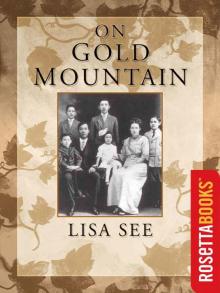 On Gold Mountain: The One-Hundred-Year Odyssey of My Chinese-American Family
On Gold Mountain: The One-Hundred-Year Odyssey of My Chinese-American Family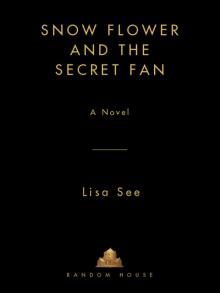 Snow Flower and the Secret Fan
Snow Flower and the Secret Fan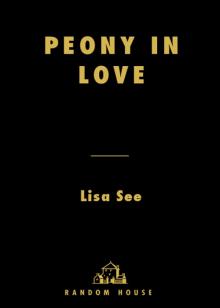 Peony in Love
Peony in Love Flower Net
Flower Net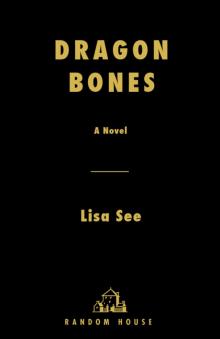 Dragon Bones
Dragon Bones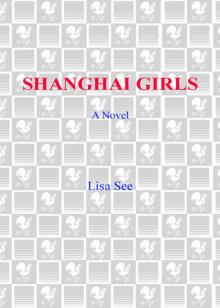 Shanghai Girls
Shanghai Girls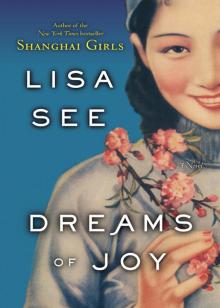 Dreams of Joy
Dreams of Joy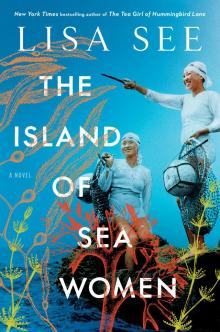 The Island of Sea Women
The Island of Sea Women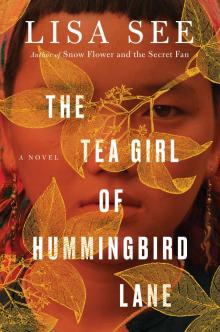 The Tea Girl of Hummingbird Lane
The Tea Girl of Hummingbird Lane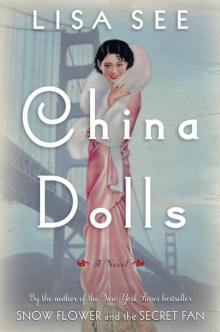 China Dolls
China Dolls The Interior
The Interior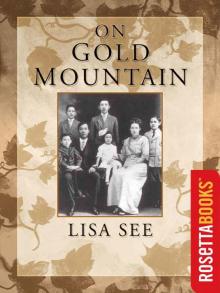 On Gold Mountain
On Gold Mountain